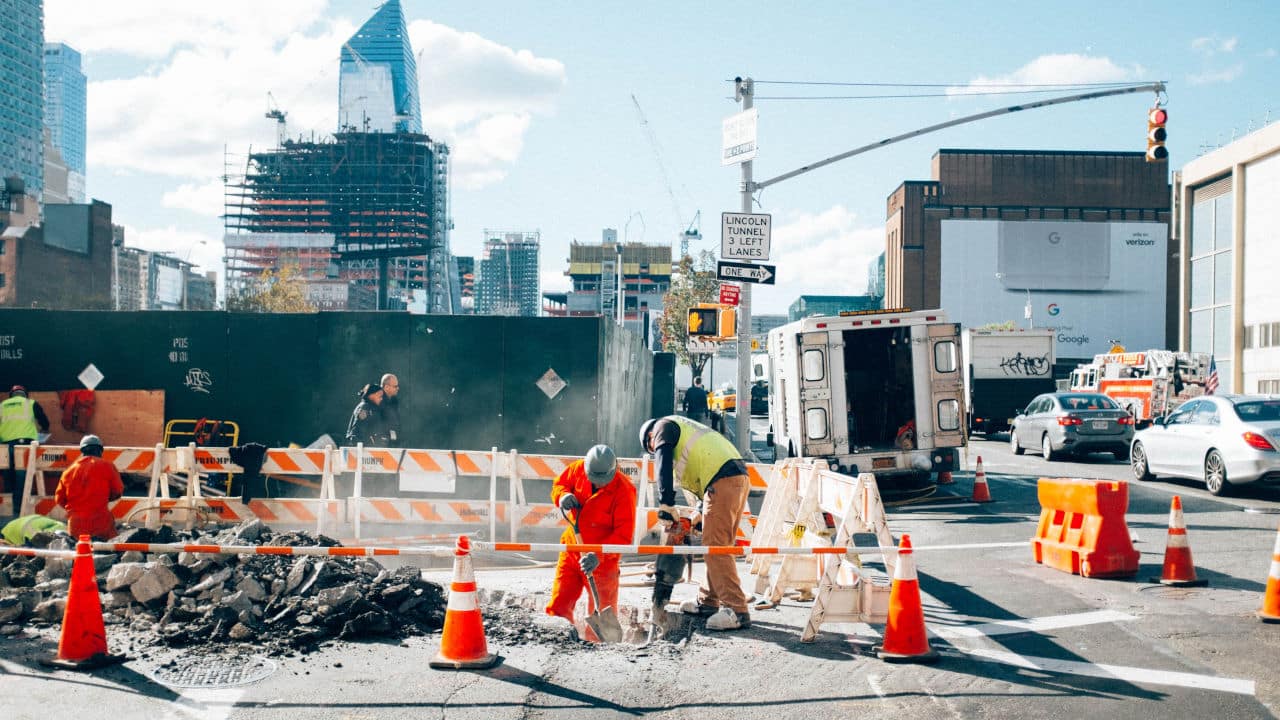If you’re a wrestling guru, the ultimate pile driver move used in wrestling may come to mind at the mention of pile driving.
However, in this article, our focus is on pile driving related to construction and building.
Pile driving, according to Pile Bucks, is “a critical part of the construction process whereby vertical columns made of various materials (wood, concrete, steel, or a combination) are driven into un-excavated soil. The piles are a type of deep foundation used to hold up large structures – often bridges.” It is usually carried out using tools known as pile drivers.
A pile driver is a powerful machine used to drive piles into the ground. The piles are used as a support structure and as part of a long-term deep foundation for structures. The pile could be made of wood, tubular steel, or solid steel.
Pile driving which is sometimes an essential aspect of construction, can prove destructive to buildings and other structures nearby. In proving damage caused by pile driving on neighboring properties, legal animation can help simplify the fact and show the cause, which is pile driving, and the effect, which is the damage caused to the properties.
How Does Pile Driving Cause Harm To Structures?
In an article by John F. Wiss, he stated that “pile driving, like dynamite blasts, nuclear blasts, and sonic booms, is a source of vibration which is frequently alleged to cause damage to structures.” Pile driving activities are accompanied by mechanical energy that can cause vibrations leading to the displacement of soil formation. The danger inherent in pile driving activities increases with the duration of time that the pile driving activity lasts.
Vytiniotis (2018), in his article, also affirmed that pile-driving causes vibrations and soil movements, which can influence the performance of nearby foundations and may cause damage to adjacent structures. He further explained that pile driving could severely affect structures at greater distances from the construction site. His research revealed that pile driving activities could have a noticeable cumulative influence on lateral soil motions, even at distances more than 50 times the pile diameter. Hence, its impact should not be overlooked.
An example of a case where the dangers of pile driving activities came into question is Caporale v. CW Blakeslee & Sons Inc.
In the instant case, the defendants drove in piles for the foundation of a building for four months nonstop. The pile driving activity affected the plaintiff’s property, which was 75 feet away from the construction site. As the pile-driving activity continued, the plaintiff noticed that his building shook and vibrated; numerous cracks opened in the floors, walls, and ceilings; the bathrooms were damaged, and the water pipes became broken. When the pile driving stopped, there was no record of further damage.
In the light of this, the aggrieved plaintiff approached the court for the damage caused to his property. The case was decided in his favor.
Like in the instant case, there could be pile driving activities in your neighborhood that could cause damage to your property. Legal animation can be used to portray the vibrations and their effects on the buildings around.
The construction animation can also be used to prove the extent of the damage caused to the properties around.
What Is The Attitude Of The Court To Pile Driving Damage Cases?
There have been different responses to pile driving damage in different jurisdictions in the US. Like in the case aforementioned, tried in the Supreme Court of Connecticut, pile driving activity, after much consideration, was slated to be a dangerous activity because of the damage that can be caused to adjacent properties even when all the required levels of care were adhered to.
Similarly, in the case of Sachs v.Chiat tried in the Supreme Court of Minnesota, the plaintiff on appeal challenged the decision of the previous court in giving judgment in favor of the defendants. However, after much deliberation, the case was slated for retrial to enable the court to quantify the extent of the damage caused to the plaintiff.
In both cases, the court gave attention to the damage caused to the plaintiffs’ properties. Therefore, as long as damage can be proved in relation to pile driving activity that has happened, the victim can receive due compensation.
Conclusion
Construction animation can be used as an effective tool in court to prove the damage caused by pile driving activities. The services of a reliable animation company with engineering experts must, however, be gotten to get the best out of the case.





